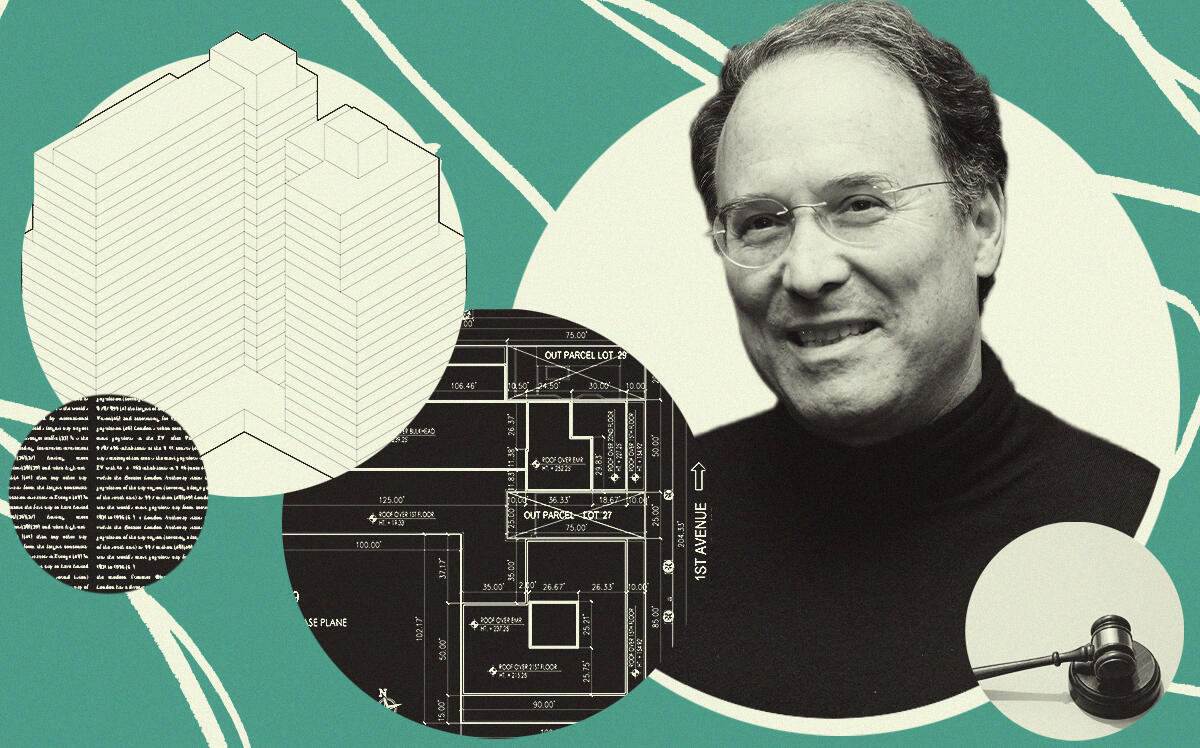
Trending
Barnett victory may set precedent for landlords battling holdouts
Judge rules Extell can deny stabilized lease, demolish without showing building plans

Gary Barnett scored a win against a holdout standing in the way of his planned 22-story tower on the Upper East Side.
The court decision may set a favorable precedent for developers stymied by New York’s rent stabilization law, attorneys said.
The Appellate Division of the state Supreme Court handed down a ruling late last month that allows Barnett’s Extell Development to not renew the rent-stabilized lease of Greg Marshall, a tenant in a six-story walk-up.
The decision greenlights Extell’s plans to demolish the building, according to court filings. The developer plans a residential project at 1637 First Avenue.
But Barnett cannot boot Marshall immediately. The tenant, who’s lived in the building for 22 years and spent the last seven battling Extell, plans to appeal the decision, Patch reported.
But for the moment, at least, the decision reduces the leverage of rent-stabilized tenants in holdout battles when a project demands demolition of their building.
Since the 2019 rent law passed, stabilized tenants have been largely insulated from displacement. One exception is if their landlord plans to clear the site.
Barnett hoped to raze 352 East 86th Street, and Marshall ended up as the sole remaining tenant blocking him.
Stabilized tenants are afforded automatic lease renewals under state law; however, a landlord can request that the state end a rent-regulated tenancy if he intends to demolish a building.
But last year, the state Division of Homes and Community Renewal denied Barnett’s request, arguing that Extell failed to file plans for the site and prove it could finance the project.
Barnett sued, but a state judge upheld the agency’s position, ruling last November that Extell had failed to provide post-demolition planning or its financial ability to complete the project.
The appellate division’s September ruling reversed that decision and introduced a new framework for developers.
A 2000 amendment to New York’s Rent Stabilization Code had ended the requirement that developers must show what they hope to build after a demolition, according to Patch.
But the state housing agency continued to interpret the law to mean a developer must also prove what it intends to build, Sherwin Belkin, partner at Belkin Burden Goldman, explained.
Read more



The real estate attorney characterized the court’s ruling as “important,” as it removes one of the steps developers need to take to move forward with demolition.
“It is a precedent,” Belkin said.
Tenant attorneys see the holding as a bad sign for tenants.
Tenant lawyer James Fishman told Patch that developers may take advantage of the interpretation and file false demolition plans to boot tenants and flip buildings.
Apartment buildings trade for less if they are largely rent-stabilized because rents are typically below market rate and increases are severely restricted, plus tenants have succession and renewal rights that can last for many decades. Projects that replace them can be market-rate.
The court’s interpretation would sap some of the strength of the 2019 rent law, which made it next-to-impossible to kick out a rent-stabilized tenant. It would also reduce buyout offers, which can net tenants windfalls of five to seven figures.
Marshall told Patch he intends to appeal the decision to the state’s highest court. The Court of Appeals is not obligated to hear the case, though. If it does, “how that court rules is crucial,” Belkin said.
Barnett last year resigned himself to a workaround after the trial court judge ruled in Marshall’s favor. Extell filed plans for a 22-story building that would snake around Marshall’s building and another mid-block property owned by the notorious Podolsky brothers, who have refused Barnett’s offers to buy it.
Last June, Barnett told The Real Deal that it was done trying to negotiate with the Podolskys. “We’ve given up on them and we’re moving on,” he said.
Extell was not immediately available to comment on how the court’s decision might affect its plans.
Barnett has spent eight years and — as of last summer — $82 million assembling the site. In June, his firm nabbed $125 million in construction financing.




